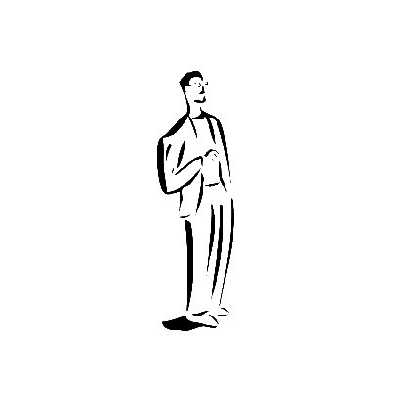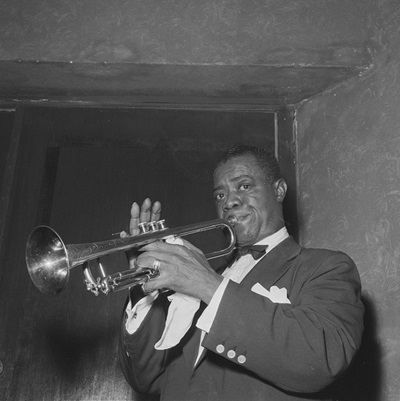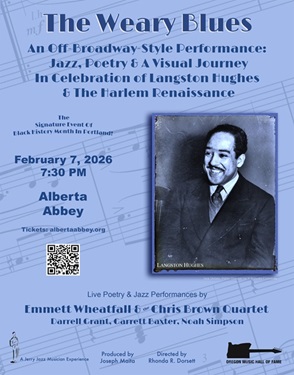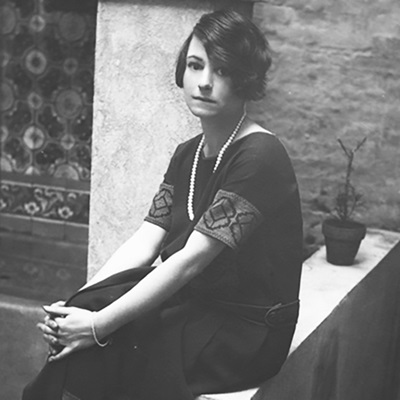Great Encounters
Book excerpts that chronicle famous encounters among twentieth-century cultural icons
*
When Rahsaan Roland Kirk appeared on Ed Sullivan’s last show in 1971…
Excerpted from
Bright Moments:
The Life and Legacy of Rahsaan Roland Kirk
by
John Kruth
(Mark) Davis then sent the Ed Sullivan show a letter warning them that they were next. With its live audience and numerous commercials, the Jazz & People’s Movement would surely throw the show off its tight schedule. Sullivan’s people thought it over and decided it was best to make peace with the J&PM rather than risk a disruption of their show. “I brought the talent coordinator of The Ed Sullivan Show to see Rahsaan and he really dug his version of “My Cherie Amour,” Mark continued. Davis claimed that the real reason Kirk wanted to play The Ed Sullivan Show was that it gave him the chance to put an all-star band together, featuring musicians he respected and admired like Charles Mingus, Roy Haynes and Archie Shepp. “He only took a short solo,” Mark pointed out.
“Roland was a strange guy,” Michael Cuscuna said. ‘The Ed Sullivan Show typifies his light and dark side. He was always fighting for the recognition of jazz, but there was also a saboteur side of him as well. With all they did, disrupting television shows, to get on the biggest one of all and then to bring Archie Shepp on, who Roland had mixed feelings about It was like letting his angry side make a statement instead of the communicating side.”
“He called me and asked me to make the gig. I was very honored and considered it a privilege that such a great saxophone player would ask me to be part of something like that,” Archie Shepp said reverently. “It was quite an exciting gig and memorable because it was the last Ed Sullivan show.”
Right up until show time Kirk’s all-star band had been slated to play “My Cherie Amour.” Sullivan’s crew had timed the song for an unusually generous five-minute slot. Upstairs in the dressing room before going on Kirk began to get all worked up. Rocking in rhythm, he started to shout, “We’re gonna burn it down! We’re gonna burn the place down!”
Observing this strange scenario, Davis grew nervous and suspicious. “Why?” he wondered “would Rahsaan have gotten Roy Haynes, Charlie Mingus, and Archie Shepp together to play a Stevie Wonder song?” A moment later his suspicions were confirmed when all broke loose across America as the band busted into a ragged free-for-all scrambled jam of Mingus’ rolling and tumbling “Haitian Fight Song.”
“I’ll never forget it,” John Stubblefield said, recalling the outrageous scene. “Rahsaan was out there and outspoken!”
“It was out! It was gone! It was totally de-ranged!” Todd Barkan said, chortling with glee.
Joel Dorn summed up the scene with these few words. “He was gone. Thin air man!” Thin fuckin’ air! What a wasted opportunity!”
“They came on at the end. The music was a total shambles,” Dan Morgenstern recalled, shaking his head. “They had the opportunity to do something and reach people but this was really out there! It might have started out as something remotely recognizable but then it went really out. It was what you might call ‘energy music.’ Even people who were familiar with these artists were scratching their heads. As far as the great unwashed were concerned, it must have been a total puzzle. The purpose of the Jazz and People’s Movement was to make everyone aware that there wasn’t enough jazz represented on television and now they clearly proved the reason why!” Dan said, throwing his hands up in the air.
“It was difficult to believe one’s eyes or ears when tuning in the show entirely by accident, not having heard of the booking. I caught Sullivan’s remark about staying tuned for Rahsaan Roland Kirk and his ‘classical jazz musicians,'” Leonard Feather wrote in Down Beat.
“After the commercial, around 9:51, there they all were, somewhat bumblingly introduced, but at least accorded captions at the bottom of the screen as each hove incredibly into view: Rahsaan himself, gaggle of horns at the ready, sounding reveille for his troops
“It all happened so fast – as is invariably the case on those rare occasions when uncompromising jazz is presented on a network show – that there was scarcely time to drink in the reality of these men’s presence before their performance was over.”
Once the sonic storm subsided, Ed Sullivan appeared looking pale and wooden, saying “Wonderful, wonderful! Let’s hear it for Ramsam Roland Kirk!” As the applause dwindled comedian Godfrey Cambridge sneaked up behind Sullivan and slipped an Afro wig over his head, proclaiming Ed “An Honorary Negro” (undoubtedly a dubious distinction in his book). As Feather pointed out, this little prank turned “the whole thing into an ethnic joke rather than the serious exercise it had been.”
A few nights later when somebody congratulated Kirk on his appearance on the Sullivan show, “Ramsam” reportedly replied, “Thanks, but don’t blame me ’cause he went off the TV, it wasn’t my fault!”
_____________
Bright Moments:
The Life and Legacy of Rahsaan Roland Kirk
by
John Kruth
__________________
Text published with the permission of John Kruth















































I saw that show on TV – what a gift. I remember Kirk introducing the musicians and saying Roy Haynes’ name twice – the 2nd time because there was not enough acknowledgement from the first – if I recall correctly – “I said, that was Roy Haynes on the drums”
I saw that show on TV – what a gift. I remember Kirk introducing the musicians and saying Roy Haynes’ name twice – the 2nd time because there was not enough acknowledgement from the first – if I recall correctly – “I said, that was Roy Haynes on the drums”
I wonder if he was aware that in 1958 Sullivan sparked a movement to establish a Jazz Hall of Fame.
I recall it was Archie Shepp getting the second mention and I could sense that the nature of the crowds’ tentative applause was “fearful”
I also remember watching it live on TV, I was in my senior year in high school. I’ve loved Charles Mingus ever since then.
There is a 5-min clip of the band from that episode (S24E18 01-24-1971) at:
https://www.youtube.com/watch?v=fzGj_-5FGT8
The first two minutes is Roland Kirk introducing some of the band members, and then they play Haitian Flight Song.